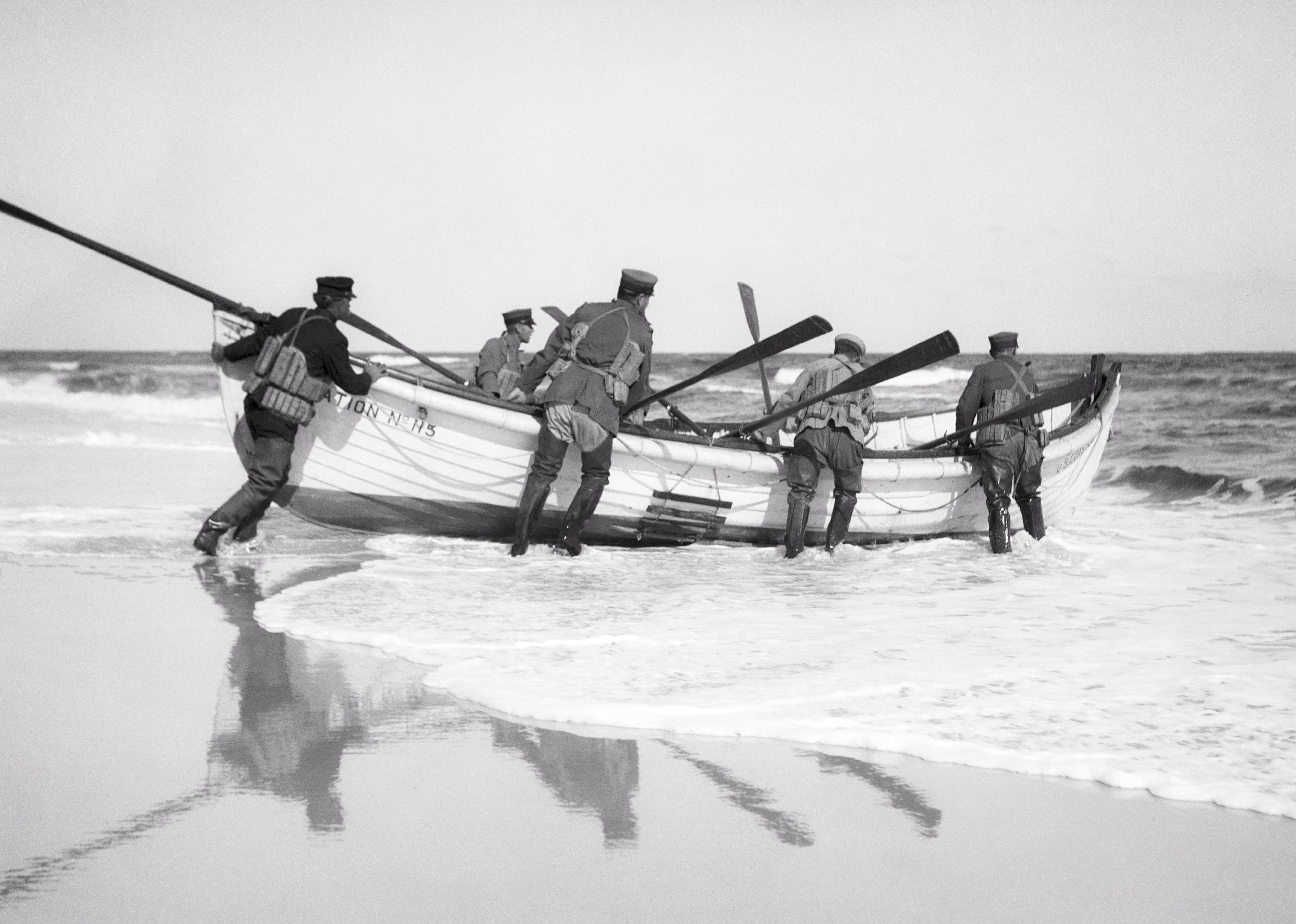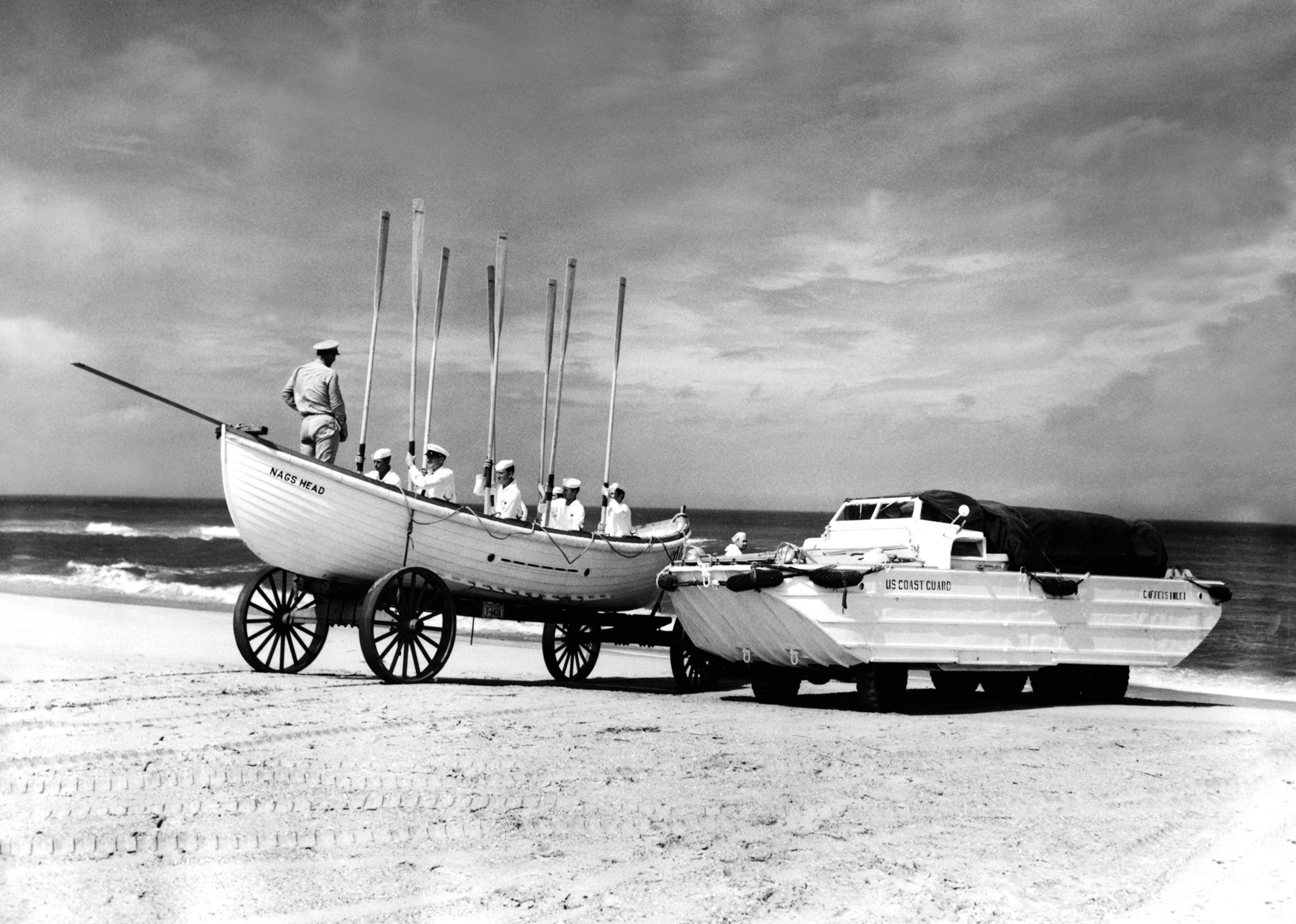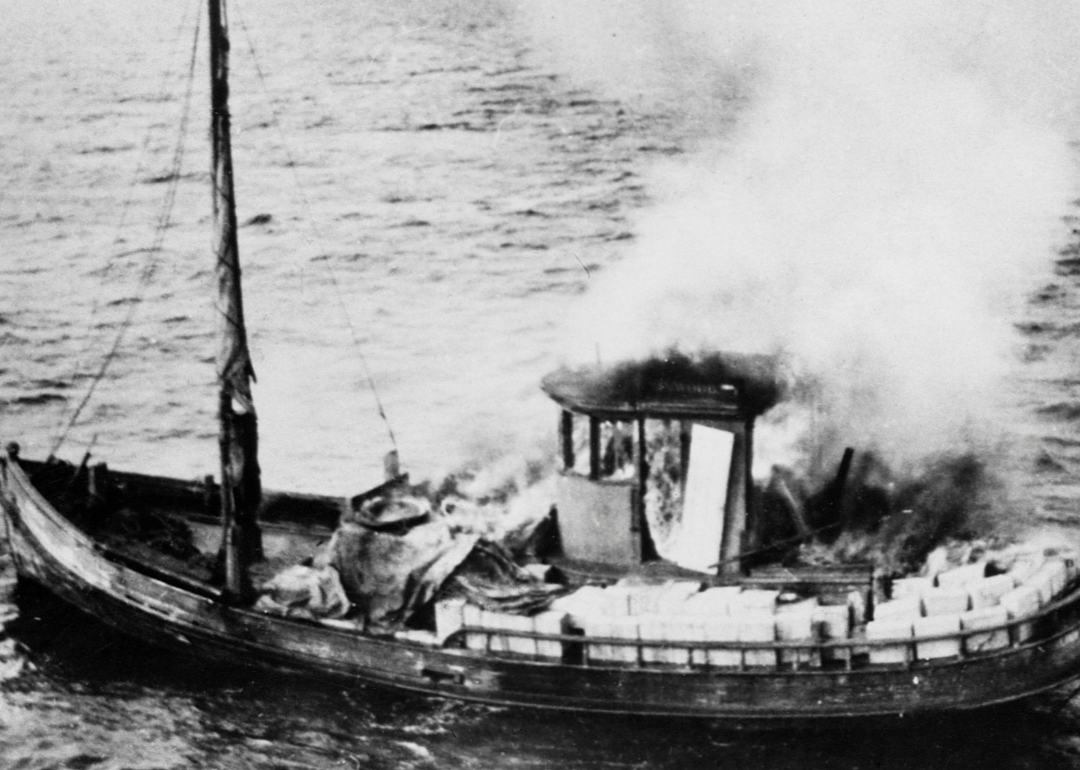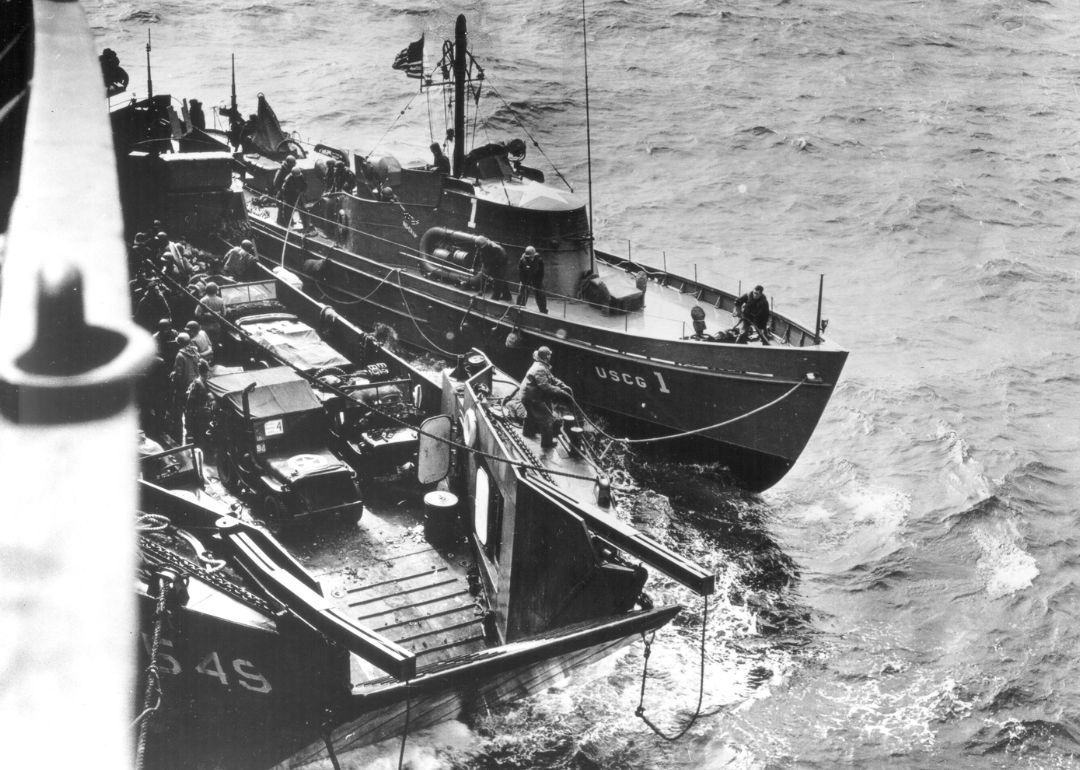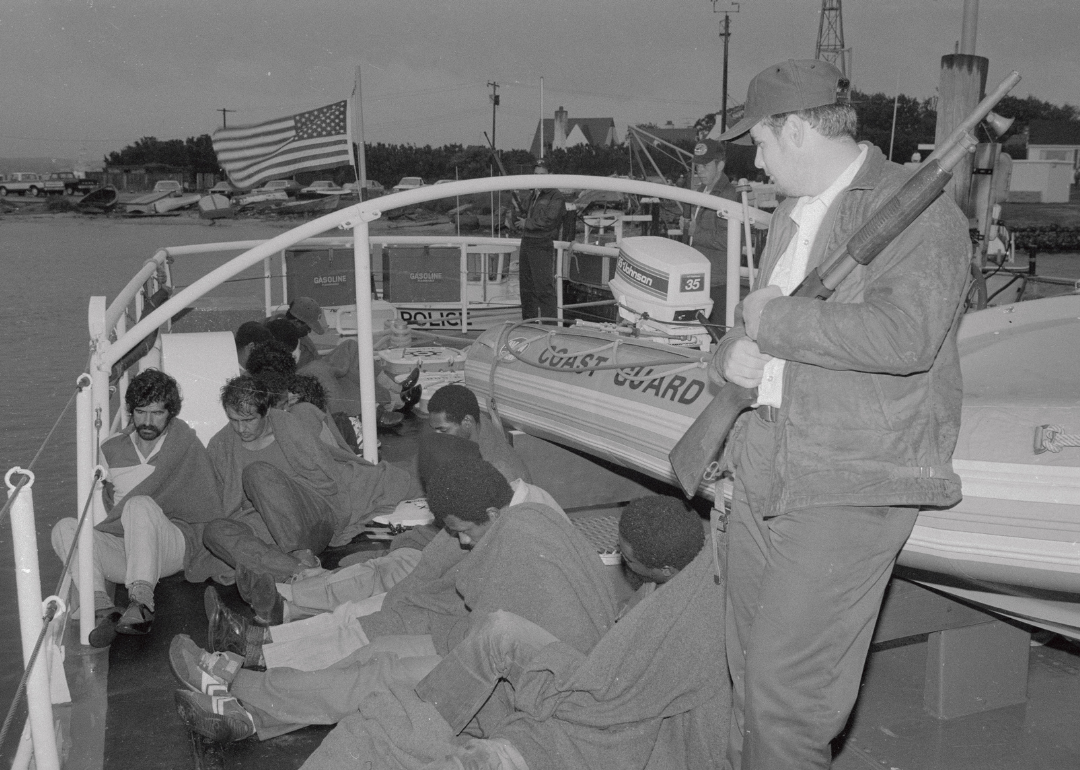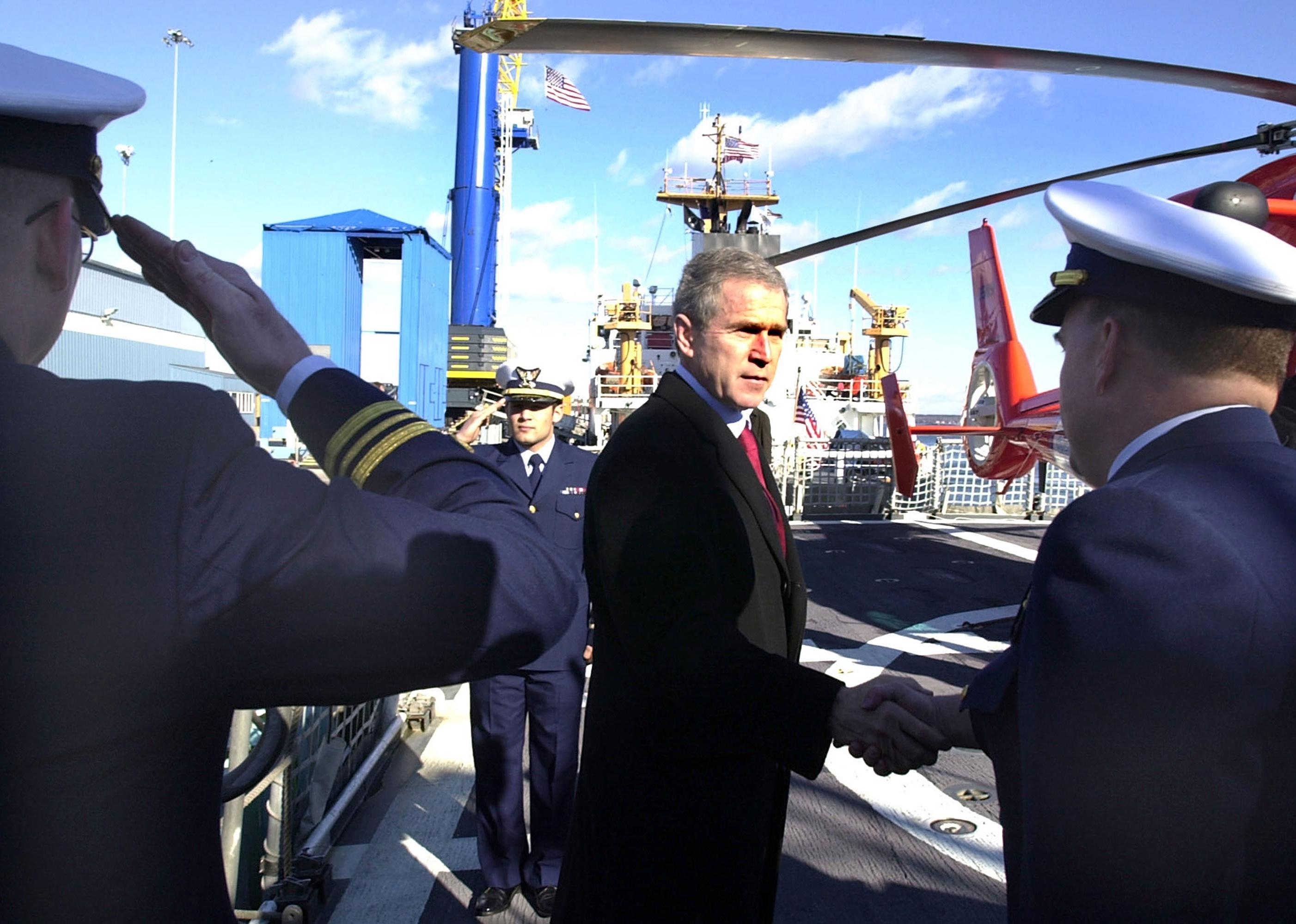A brief history of America's oldest seagoing military branch—and it may not be the one you think
H. Armstrong Roberts/Classicstock // Getty Images
A brief history of America’s oldest seagoing military branch—and it may not be the one you think
U.S. Coast Guard launching a wooden rescue boat on the beach.
The United States Coast Guard plays a critical role in maintaining the country’s national, border, and economic security. The oldest seagoing branch in the U.S. military, it is one of the nation’s eight federal uniformed services, its duty resting in securing the maritime domain.
While the Navy concentrates on guaranteeing navigational freedom and American power projection in the high seas, securing American economic prosperity and national security, the Coast Guard focuses on law enforcement, search and rescue, and patrolling duties in U.S. territorial waters and waterways.
The Coast Guard’s mandate, according to the service’s website, is to ensure that the 95,000 miles of U.S. coastline and the U.S. Exclusive Economic Zone’s 4.5 million square miles are safe and secure.
On an average day, the military branch reports that it carries out 42 search and rescue operations, impounds 1,253 pounds of cocaine and 172 pounds of marijuana, conducts 133 patrols of maritime infrastructure, examines up to approximately 313 inbound merchant vessels for threats to national security, and intercepts the transit of 18 illegal immigrants.
The Coast Guard’s history goes as far back as the late 1700s. Using government reports, news archives, and other historical sources, Stacker has compiled a list of the major events in the branch’s long history.
Editor’s note: The original headline of the article was missing the word “seagoing.” Stacker has corrected and apologizes for this omission.
![]()

Cdr. Eric C. C. Tufnell/Buyenlarge // Getty Images
Late 1700s: The Revenue Marine
Watercolor by Commander Eric C. C. Tufnell of the burning of the frigate USS Philadelphia
Before the Navy’s founding, the Revenue Marine, established in 1790 by then Secretary of the Treasury Alexander Hamilton, served as the U.S.’s first waterborne armed service. Hamilton intended for the Revenue Marine to serve as an armed customs force, protecting government revenue from smugglers who sought to bypass tariffs by bringing in products illegally as contraband. After Congress banned the import of slaves into the country in 1807, the Revenue Marine was instrumental in enforcing the prohibition, as early as January 1808, according to the Coast Guard’s Office of the Historian. Aside from stopping contraband, the service also took part in rescuing people at sea. During the 1798-1801 Quasi-War with France where the U.S. undertook a limited naval engagement against French privateers hindering U.S. shipping in the Caribbean, revenue cutters—light, fast-moving ships—from the Revenue Marine service took part in the conflict. In 1894, the Revenue Marine was renamed the Revenue Cutter Service.
Buyenlarge // Getty Images
Late 1800s: Official founding and the modern duties of the Coast Guard
A Coast Guard boat on the beach waiting to take off.
In the absence of modern navigational aids, sailors in the 17th and 18th centuries were more exposed to the dangers of storms and inclement weather than their contemporary counterparts. In the absence of a formal service to help sailors in danger, volunteers took the mantle, according to the U.S. Life-Saving Service Heritage Association. Volunteer rescue efforts, notably those by the Massachusetts Humane Society, gradually caught the attention and won the support of the government, which aided the volunteers by giving them equipment and helping them construct outposts. When Revenue Marine Chief Sumner Kimball was appointed in 1871, he began to lobby for the creation of the “U.S. Life-Saving Service.” Kimball managed to secure a $200,000 appropriation from Congress to maintain personnel and outposts for rescue operations. Kimball’s efforts and the appropriation helped institutionalize the Coast Guard’s search and rescue mandate.
© CORBIS/Corbis // Getty Images
Early 1900s: World War I and Prohibition
A rum runner boat set fire by crew before Coast Guard arrives.
Following recommendations from President William H. Taft’s Commission on Economy and Efficiency, the Revenue Cutter Service and Life-Saving Service were combined to become the Coast Guard by 1915, according to the Coast Guard Aviation Association. During WWI, the Coast Guard served the nation in many ways, such as escorting merchant ships to Europe, protecting them from German submarines, and Coast Guard personnel going on combat as part of the Navy. Around 9,000 Coast Guard personnel took part in World War I. According to the Department of Homeland Security, under the 1917 Espionage Act, the Coast Guard received the authority to monitor the movement of ships, designate areas for anchorage and no unauthorized access, and exercise control over individuals onboard ships. Following the end of the war, the Coast Guard continued its rescue and contraband interception mandate, especially by intercepting the trafficking of illegal liquor during Prohibition.
HUM Images/Universal Images Group // Getty Images
Mid-1900s: World War II, the Korean War, and the Vietnam War
A Coast Guard boat tied up to another boat on D-Day.
In 1939, the Coast Guard assumed the duties of the Lighthouse Service, which was tasked with building and repairing lighthouses, maintaining personnel and vessels employed by the lighthouses, and helping vessels with navigational assistance. During the U.S.’s neutral and isolationist years in World War II, the Coast Guard played an instrumental role in defending the country’s neutrality rights, carrying out air and sea patrols to report on the movement of vessels belonging to belligerent nations near the nation’s coastline and the Caribbean, according to the Coast Guard Aviation Association. During the U.S.’s entry into World War II, the Coast Guard along with the Navy took part in engagements in the Pacific and during Pearl Harbor. In the Korean War, the Coast Guard took part in port security, maritime inspection, search and rescue, and patrolling duties, according to the U.S. Coast Guard History Program. As early as 1946, the Coast Guard took part in helping train the Korean Coast Guard. During the Vietnam War, the Coast Guard helped with interdiction, port security, explosives unloading, and navigation assistance in Thailand and the Navy, working in combat and service roles, according to the branch’s website.
Bettmann/Contributor // Getty Images
Late 1900s: The 200-mile Fishing Zone and Drug Wars
A Coast Guard officer guarding men arrested for drug smuggling on a boat.
In 1977, under the Magnuson Fishery Conservation Act, a 200-mile Fishery Conservation Zone was established. The goal of the zone’s establishment was to preserve fish from excessive fishing. Following the Act, the Coast Guard was authorized to use its air and waterborne forces to enforce the law in the zone. Later, the fishing zone became part of the Exclusive Economic Zone, according to the Coast Guard Aviation Association. The Coast Guard also took part in drug enforcement, working to interdict seaborne smuggling of drugs such as marijuana in the Atlantic, Caribbean, and the Gulf of Mexico. Thwarting drug smuggling and enforcing fishing rules are still within the purview of the Coast Guard today.
Pool Photo // Getty Images
Early 2000s: Transfer to the Department of Homeland Security
President George W. Bush visits the U.S. Coast Guard cutter Tahoma in Portland, Maine.
In 2002, President George W. Bush signed the Homeland Security Act into law, removing the Coast Guard from under the control of the Department of Transportation to the newly formed Department of Homeland Security on March 1, 2003. During the 2003 Iraq War, the Coast Guard helped support coalition forces in ensuring the security of ports and waterways in Iraq for aid shipments. The Coast Guard also helped preserve maritime freedoms and energy security in the Persian Gulf through patrols watching out for Iranian aggression. Today, the service’s mission is fourfold: protecting people from threats emerging from the sea such as stormy weather through search and rescue operations after hurricanes, defending maritime flora and fauna from human activities at sea, ensuring U.S. laws are respected at sea and in waterways, and assisting with the movement of ships to and from U.S. ports.
